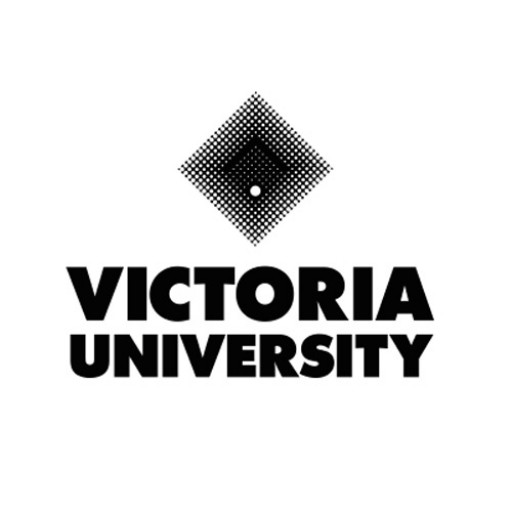The Bachelor of Urban and Environmental Planning at Griffith University offers students a comprehensive education in the principles and practices of sustainable urban development and environmental management. This program is designed to equip graduates with the knowledge, skills, and ethical understanding necessary to address the complex challenges facing cities and regions today. Through a blend of theoretical frameworks, practical applications, and industry engagement, students will gain expertise in land-use planning, environmental assessment, urban design, and policy development. The curriculum emphasizes sustainable development strategies, community engagement, and innovative problem-solving to create resilient and liveable communities. Students will have opportunities to participate in real-world projects, internships, and collaborations with industry partners, providing valuable experience and networking opportunities. The program encourages critical thinking and encourages students to consider social, environmental, and economic factors in their planning solutions. Graduates of the Bachelor of Urban and Environmental Planning are well-prepared for careers in local government, consulting firms, environmental organizations, and urban development agencies. The university’s focus on practical skills, combined with cutting-edge research and a strong commitment to sustainability, ensures that students are ready to make meaningful contributions to shaping sustainable and inclusive urban environments. By the end of the program, students will be capable of contributing to the development of policies and plans that promote environmental stewardship, social equity, and economic vitality, helping to create healthier, more sustainable places for future generations.
Griffith University grants credit and recognition of prior learning which may relate to prior formal learning or earlier casual and non-formal learning. For more information, please visit the following website:https://www.griffith.edu.au/apply/credit-transfer Charge transferGriffith's innovative Credit Precedent Database lets you learn which credit decisions are made before. All these precedents will provide you with a sense of what it is possible to expect.https://app.griffith.edu.au/credit-precedent/credit_result.php? Ngpc=3216&SortField=Linked%20Institutionpercent 20Name&noresultserror=error.html&search View credit precedents with this particular program
The Bachelor of Urban and Environmental Planning at Griffith University requires students to complete a total of 240 credit points to graduate. The program is designed to provide students with a comprehensive understanding of urban and environmental planning principles, policies, and practices. Students must undertake core courses that cover fundamental areas such as land use planning, environmental management, urban design, and sustainable development. In addition to core courses, students are required to choose elective subjects that allow specialization in areas like transportation planning, community development, or GIS applications. The program includes practical components, such as industry placements or projects, to ensure students gain real-world experience. To qualify for the degree, students must also meet the university’s academic progression standards, including maintaining a satisfactory GPA throughout the program. The curriculum is structured over several semesters, with foundational courses in the first year, followed by more advanced and specialized subjects in subsequent years. There may also be mandatory fieldwork or community engagement activities to enhance experiential learning. Students are encouraged to develop research skills, analytical capabilities, and ethical considerations integral to urban and environmental planning. Upon successful completion of the program, graduates are equipped with the knowledge and skills necessary for professional practice in urban planning, environmental consulting, or related fields. The program aligns with industry standards and includes opportunities for accreditation or recognition by relevant planning associations. It aims to prepare graduates to contribute effectively to sustainable and resilient urban environments, addressing the challenges of urbanization, climate change, and resource management.
Financing studies for the Urban and Environmental Planning program at Griffith University typically involve a range of options designed to support students financially throughout their academic journey. International students are often encouraged to explore scholarships, which are awarded based on academic merit, leadership qualities, or specific competencies related to urban and environmental planning. Domestic students may benefit from government assistance programs, including the Australian Commonwealth Supported Place (CSP), which significantly reduces tuition fees, and various federal and state grants aimed at fostering education in sustainability, urban development, and environmental management. Griffith University also offers a variety of scholarships specifically dedicated to planning students, such as the Griffith Scholarship for Excellence, which provides financial support to high-achieving students.
In addition to scholarships, students can consider student loans available through the Australian government, which offer flexible repayment options once students reach a certain income threshold. Private funding sources, including education loans from banks, or sponsorships from industry partners involved in urban development projects, can also play a role in financing studies. Part-time work opportunities are available on or near campus, enabling students to supplement their income while gaining practical experience relevant to their field.
International students should also investigate external funding options offered by their home countries or international organizations, which often support studies abroad in specialized fields like urban and environmental planning. It is recommended that prospective students consult the Griffith University Financial Aid Office, as well as external scholarship databases, early in their planning process to identify the most suitable funding options. Tuition fees for the program vary depending on the student type and residency status, but overall, Griffith provides a range of financial aid opportunities to make studying urban and environmental planning accessible to a diverse student population.
The Bachelor of Urban and Environmental Planning at Griffith University is designed to equip students with the knowledge and skills necessary to address complex issues related to urban development, environmental management, and sustainable planning. The curriculum combines theoretical frameworks with practical applications, enabling graduates to contribute effectively to planning processes in diverse settings. Students will learn about land use planning, environmental policy, geographic information systems (GIS), urban design, and community engagement. The program emphasizes sustainable development principles and prepares students to work in government agencies, consulting firms, or non-governmental organizations focused on urban and environmental challenges. Through a combination of coursework, industry projects, and internship opportunities, learners gain hands-on experience that enhances employability. The program is structured to provide a comprehensive understanding of the social, economic, environmental, and legal aspects of planning. Graduates are well-positioned to tackle pressing issues such as urban expansion, climate change adaptation, heritage conservation, and resource management. Griffith University's facilities and extensive network of industry partnerships support experiential learning and innovation in the field. The program aims to develop critical thinking, problem-solving skills, and ethical decision-making, ensuring students are prepared to make responsible contributions in their professional careers. Additionally, the program offers pathways for further study and specialization in fields related to urban design, environmental planning, or regional development. The faculty comprises experienced professionals and researchers committed to high-quality education and impactful research in urban and environmental planning disciplines. Overall, the Bachelor of Urban and Environmental Planning at Griffith University prepares students to become future leaders dedicated to creating sustainable, livable, and resilient urban environments, addressing global and local challenges with innovative solutions and a comprehensive understanding of planning processes.







